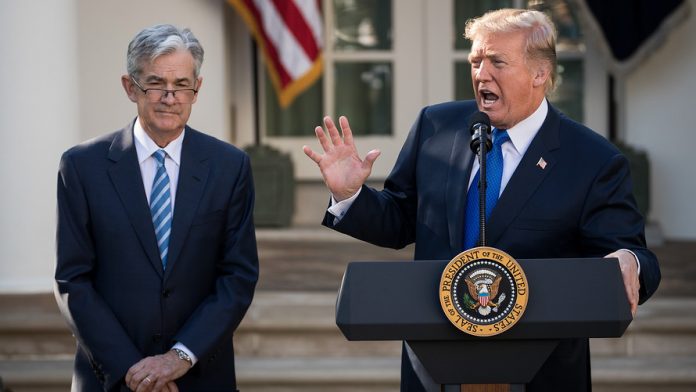Can you hear that? It’s the sound of the market shuffling its feet ahead of what could be a bombshell report from the Fed later today.
Minutes from the Federal Reserve’s January meeting are set to be released at 2pm EST, and if the Federal Open Market Committee’s (FOMC) stenographer took good notes, investors might find out why chairman Jerome Powell took a dovish turn three weeks ago. Despite his natural inclination to push rates higher, he and the rest of the committee decided to lay off the gas pedal to support a continued post-Christmas rally.
Even better for market bulls, they decided to be more “patient” about enacting future interest rate hikes – something that prolonged the new year’s equity surge into late February.
And while their decision to scale-back the rate increases may have boosted stocks temporarily, it could all come crashing down if investors find out that Powell’s change of heart was only temporary. It’s certainly possible, as the long-term goal still revolves around raising rates and unwinding nearly a decade of quantitative easing (QE) – a strategy used by his predecessors Ben Bernanke and Janet Yellen.
Specifically, investors want to find out what the Fed plans to do about the $3.8 trillion (yes, trillion) in bonds that it currently holds on its balance sheet – all accumulated during a prolonged period of QE. It was part of Obama’s economy-saving framework that pumped up equities with little real economic growth, and has become a major burden for Powell’s team.
By selling or dumping these bonds (something that the Fed eventually must do), the price of bonds will decrease significantly, causing bond-yields to rise and by proxy, interest rates. When interest rates go up, corporate debt becomes more expensive.
When corporate debt becomes more expensive, any company that has a sizable loan balance (virtually all of them) instantly suffers, as the increased costs of debt hurts everyone’s bottom-line across the board, slashing earnings.
When earnings drop, so do stock prices (usually), as investors start selling.
And though a market dip may be temporary when rates increase (as a healthy economy can usually absorb the pain of pricier debt), the fact remains that a moderate drop in the market right now could cause a mini-collapse.
The holiday rally is still going, and even though nobody wants to admit it, we’re due for a correction at some point. Bulls know that they’ve overstayed their welcome by a wide margin, and when the reckoning eventually comes, it could be absolutely terrifying to behold.
And honestly, it won’t take much to cause the next plunge.
A bad U.S.-China trade meeting, political fiasco, or yes, even minutes from a Fed meeting could be enough to send investors running for the hills.
That’s precisely why so many analysts, experts, and traders have their focus locked in on today’s 2pm reveal of the January FOMC meeting’s notes. If they find something buried in there that suggests future rate increases or the dumping of treasury bonds, the selling frenzy might be upon us in a hurry.
So, until then, the market continues to mark time, waiting to see if Powell and co. are playing their hand closer to the chest than they initially let on. If they are, things could get very interesting as we head into March, a historically good month for the market.








